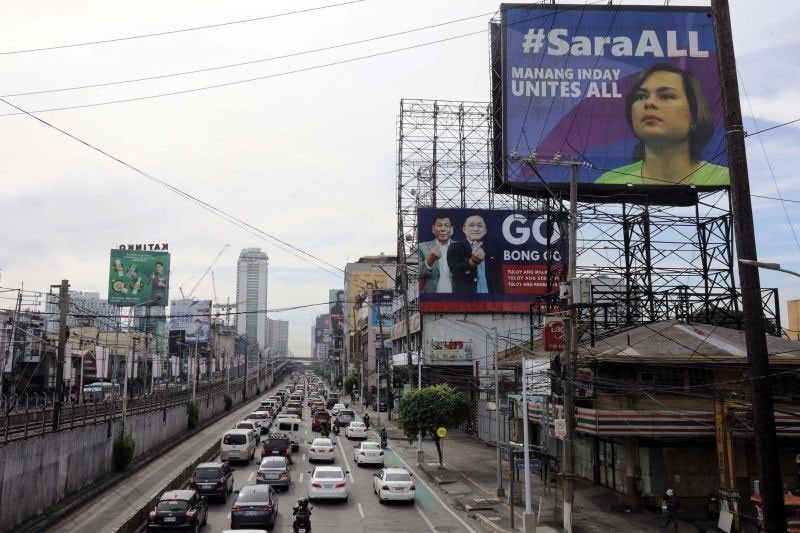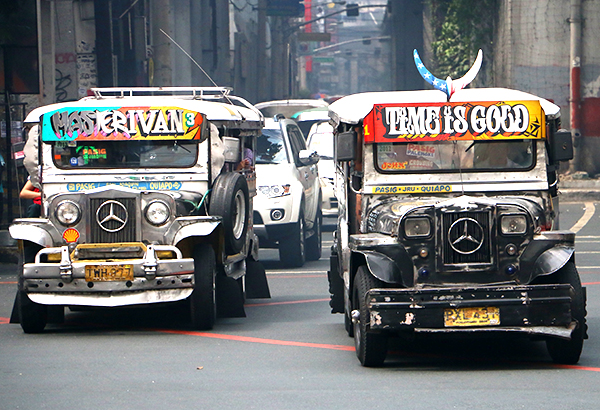Duterte issues EO limiting billboard size

MANILA, Philippines — President Duterte has signed an executive order regulating out-of-home advertising signs and billboards, citing the environmental impact of such structures.
In signing EO 165, Duterte said: “Unregulated advertising signs and billboards pose traffic distractions and hazards, constitute threats to public safety and contribute to environmental degradation and urban blight due to their inappropriate location, site glare, size, structural configuration and uncontrolled height limit.”
The EO was signed by the President on March 21.
Duterte also cited the need to “harmonize national and local rules and regulations as part of the strategies on ease of doing business, and in facilitating self-regulation within the advertising industry.”
Section 2 of the order sets the following standards on signs and billboards:
Billboard Setback Requirements – A newly constructed billboard structure must have at least five meters of setback from the frontage property line, measured perpendicularly up to the support structure.
Existing static billboards or LED billboards with a setback of less than five meters must comply with the guidelines for size of display surface and height of billboard structures, and relevant clearances from the high tension wire as prescribed by the Philippine Electrical Code.
Size of Billboard Display Surface – Signs and structures and billboards should not exceed 250 square meters. Light-emitting diode (LED) and other electronic signs must have a minimum display area of 55 square meters and a maximum display area of up to 250 square meters, as the site allows, provided that the sign conforms with the structural design and wind load exposure prescribed under the latest edition of the National Structural Code of the Philippines.
Height of Billboard Structures – Free-standing structures should have a maximum height of 36 meters from the established grade, provided it will not obstruct any public utility and fire exits in accordance with existing laws.
A roof-mounted billboard structure must have a combined height limit of not more than 26 meters for urban areas and not more than 36 meters for rural areas, measured from the ground to the established grade.
Rooftop Billboards – New rooftop billboards should not exceed or occupy more than one-fourth of the street frontage of the building on which they are attached, with the base area of the support skeleton frame structure not more than 10 square meters on any horizontal section, and must be constructed on incombustible material pursuant to Section 1210 of the Implementing Rules and Regulations (IRR) of the Building Code.
Wall-Mounted Billboards – Wall-mounted billboards must be placed against blank walls and should not exceed the area of such wall, in accordance with the provisions of the latest revision of the IRR of the Building Code.
Distance between billboards – New billboard structures to be installed or erected at the same side of the road must have a minimum distance of 100 meters apart.
Obstruction of an existing billboard or on-premises sign by an advertising billboard from its intended viewership, no matter how partial, is strictly prohibited. The existing outdoor advertising sign is considered not obstructed by a newly constructed sign when it is fully visible within 200-meter distance from its intended audience.
The order also prohibits local government units (LGUs) from imposing requirements higher or more burdensome than the given parameters to ensure uniformity and harmonization of national and local standards on signs and billboards.
Duterte, meanwhile, ordered the Department of Public Works and Highways to streamline and establish an online platform for permitting and licensing applications and procedures of advertising signs and billboards. A manual application system may still be maintained based on the streamlined applications and procedures.
He also enjoined LGUs to enact ordinances that supplement national billboard regulations on the following areas: non-obstruction of natural landscape and prohibition of signs or billboards that debase or offend aesthetic and cultural values and traditions; restricted-areas or those that distract or obstruct the view of the public as to constitute a traffic hazard, especially along major thoroughfares and public roads; and billboard-free zones such as historical sites, tourist destinations and parts, institutional establishments and critical facilities, such as power plants.
- Latest
- Trending




























